Needing a weekend escape from their busy lives and stressful careers in London, designer Caroline Holdaway and her photographer partner, Fatimah Namdar, relish the peace and quiet of their eighteenth-century cottage in the Cotswolds.
A stone path leads through the front garden to the main entrance of the Cotswolds cottage.
A steel and glass wood-burning stove from Scan warms the sitting room, while violet velvet upholstery from Emery & Cie on the armchair complements a Sinclair Till flatweave rug.
While she was working on an interior-design project in the Cotswolds, Caroline Holdaway and her partner Fatimah Namdar, who is a photographer, rented a cottage in the Windrush Valley and, growing to love the area, started a long search for a place of their own.
Two years later, they found Mullions, a tiny 1710 farmer’s dwelling situated in a hamlet running along the upper valley of the River Coln. It still maintains its agricultural ties with two working farms at either end and no street lights, and in recent memory the cows used to be driven up the lane by ‘our darling Val’, who died a couple of years ago. Until only a few decades ago, the village school educated just six pupils and Mullions – then a one-up, one-down cottage – had housed a mother and five children.
Caroline and Fatimah had previously seen Mullions only from the outside, dismissing it on the grounds that it had no garden to speak of, and had a rear extension built into the bank, which they feared might be dark. However, after more disheartening months of searching, they decided to take a look inside. It was the feel of the place and the unexpected light inside that won them over.
A large Devon slipware bowl by Clive Bowen sits on the elm dining table, found in London’s Church Street Market.
They quickly laid bare the interior, leaving a blank canvas to work on. ‘I always start with the floor,’ explains Caroline. ‘We found this one on Lochnagar Street, in the East End – planks from an industrial building that still showed yellow numbers and the imprint of machinery. It was summer, so we laid the board out in the garden and Velcro-padded the lot. This technique removed the yellow numbers while keeping the rest of the character and markings in the boards. Just what we wanted.’
Old elm pieces were used to craft the shelves in the kitchen above Carrara-marble-topped units made by Charles Hurst. Planks of reclaimed pine from an industrial building span the floor.
Once laid, the floor was coloured and finished. Care was taken to change the direction of the planks in different areas to add authenticity, so that it looks as if the floor has always been there. They worked with just one ‘wonderful builder’ called Gordon Anderson, now retired. ‘Gordon absolutely shared our aesthetic,’ explains Caroline. ‘He too rooted around reclamation yards and found the deep stone for the window sills, which had previously been laminate.’ Clyde radiators were installed, although the Scandinavian wood-burning stove in the sitting room is so effective that they barely need them. ‘It’s essential in the winter when we suffer frequent power cuts, because the stove ensures you can have heat and even fry an egg on the marble top.’
A view of the dining room from the first floor.
The kitchen is tiny ‘but perfectly formed’, with the same floorspace as a larger kitchen with an island would have, and it adequately suits their needs. They cook on an oil-fired Rayburn, which stands in an alcove – ’20 minutes and you can have boiling water’, says Caroline. Charles Hurst built the kitchen cupboards, and the elm shelves, of which they are especially fond of, were made by Gordon’s son, Gordon junior. As were the shelves throughout the house that are used for simple but effective display.
Caroline and Fatimah’s collection of pottery bowls and jugs is displayed along the stone window sill next to a Rayburn cooker in the kitchen.
Upstairs, they replaced an avocado bathroom suite with a white one and took out the low modern ceiling in the main bedroom. The first planning request to reveal the apex was turned down, until Caroline spotted that the original timbers held a trace of distemper. This settled any argument that the timbers had not originally been part of the room, and consent was given. Now the bedroom is light and airy, the apex clad in reclaimed matchboarding giving it a period feel.
The bathroom panelling is painted in Paint Library’s ‘Slate IV’.
Caroline frequently commissions rugs from Sinclair Till, the Scandinavian flatweave in the sitting room being a particular favourite. ‘I have used this for 20 years. We have two large dogs and it is utterly bulletproof. It has a discretion and dignity and I use these rugs everywhere.’ In the dining area they have an Ikea rug – bought because Lenny, their new rescue dog who had never been inside a house, was ‘sliding everywhere’.
Across the hall from the main bedroom, an olive-stripe flatweave rug from Sinclair Till.
The dining table – essentially a rough-hewn piece of elm – sits so perfectly in what the estate agents grandly called a ‘dining hall’. ‘It nearly made us crash the car when Fatimah spied it in a shop window down Church Street Market – exactly the signature piece we had been looking for.’ The Scandinavian chairs around it have been collected from various places, and since they were not originally a suitable height for dining, the legs were extended by Gordon.
An olive-stripe flatweave rug from Sinclair Till in the spare room contrasts with a vibrant tartan rug from Toast used as a bedspread and cushions made from fabric pieces left over from projects.
But the underlying DNA of the cottage is the collection of pottery that Caroline and Fatimah have made over the years. Plates, bowls and jugs by Michael Taylor – a new find – and Richard Batterham dishes complement the jewel-like green of pieces collected from a Biot pottery in the South of France, now sadly closed, with the decoration on some designed by Caroline herself. Many pieces, including a glorious, eye-catching asparagus plate in the dining room are by the now much collected Clive Bowen. These together with candlesticks by Marianna Kennedy give the interior all the detail it needs.
The low, modern ceiling in the main bedroom was removed to reveal the timber beams and clad with reclaimed matchboarding. A pair of custom-made oak table lamps from Belgium add symmetry and style.
Low stone walls, post and rail fencing and old roses now enclose the front garden. ‘The pleasure of standing on our tiny handkerchief lawn and looking at the magnificent, enormous skies is a privilege,’ says Caroline. ‘I am excited every time I leave London with the thought of being here. It is a very welcoming cottage and very giving. When we are really busy at work, it becomes more important to be here and I sleep here so well; it is dark and totally quiet. This cottage is now a part of us, an effortless comfort blanket’.
Caroline Holdaway Design: 020-8341 6525, carolineholdaway.com
Like what you’re reading? Subscribe to our top stories.






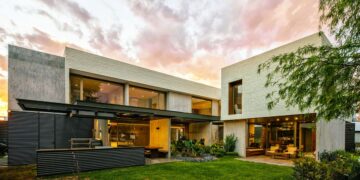
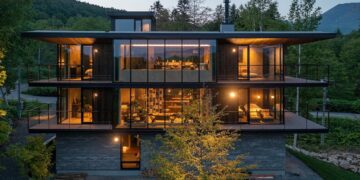
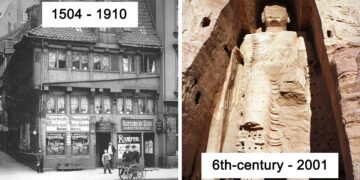







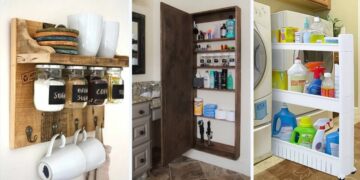




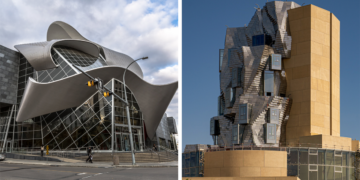







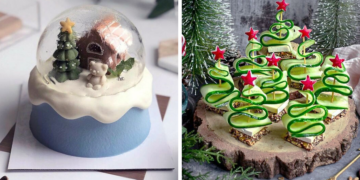
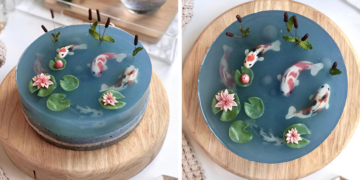

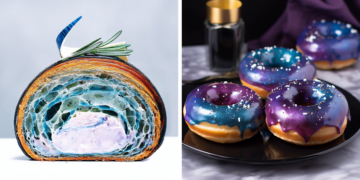


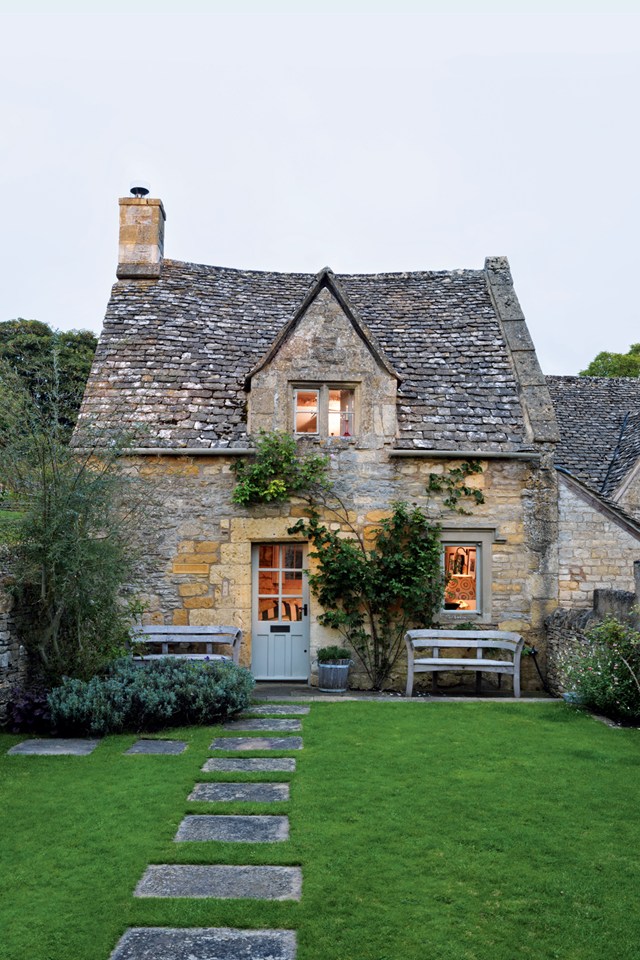
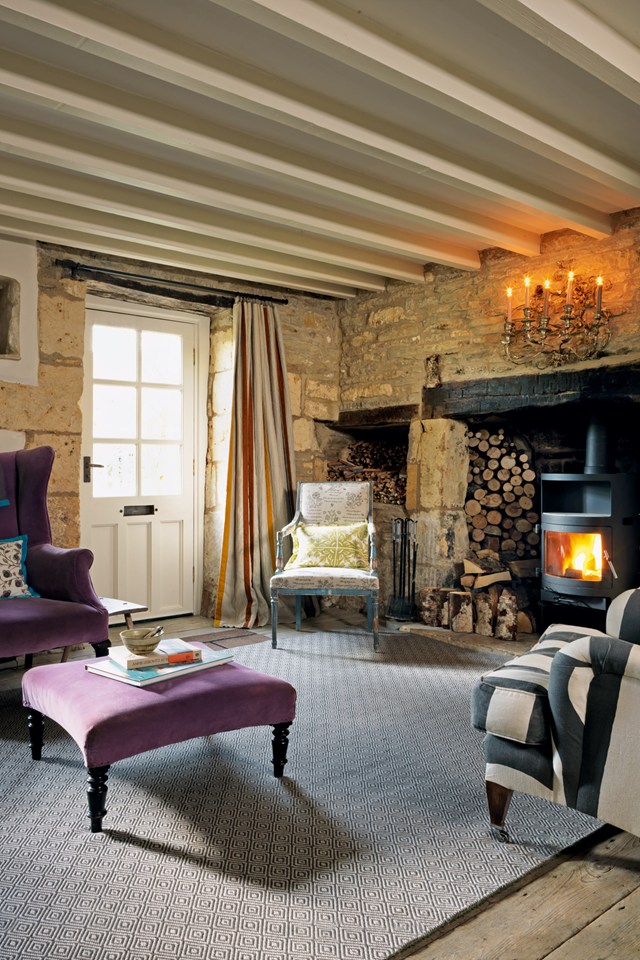
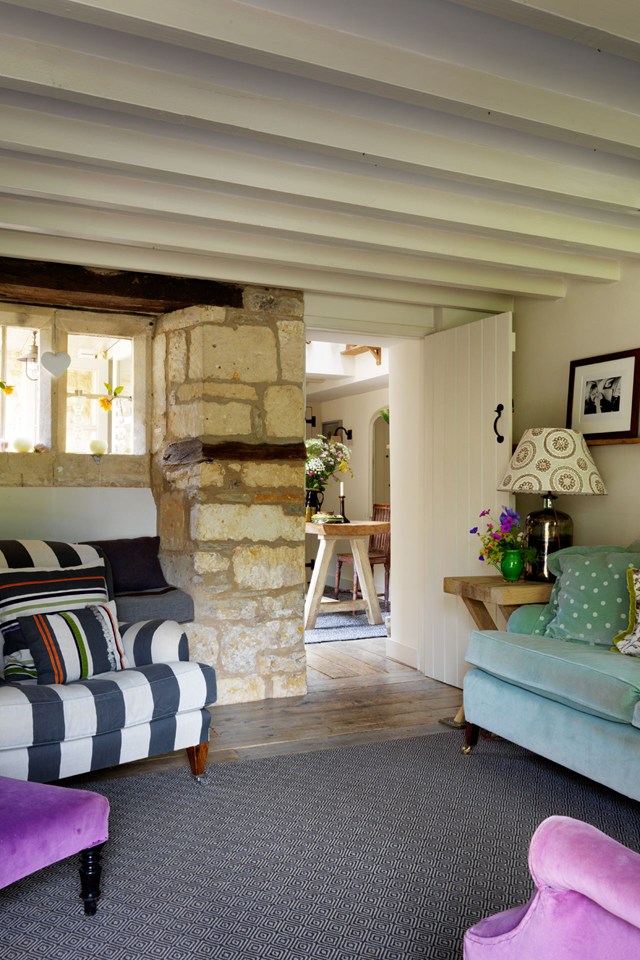
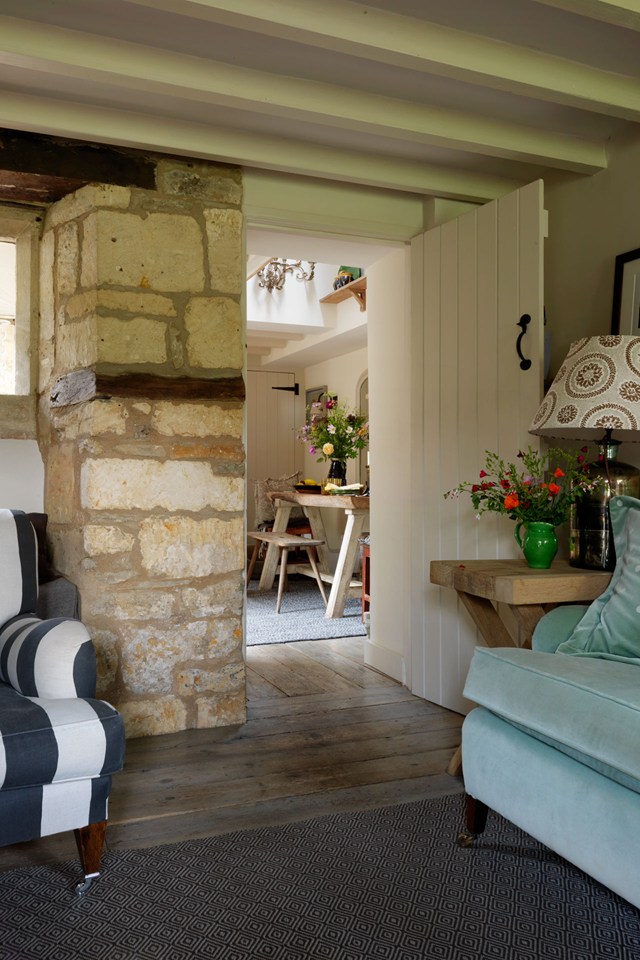
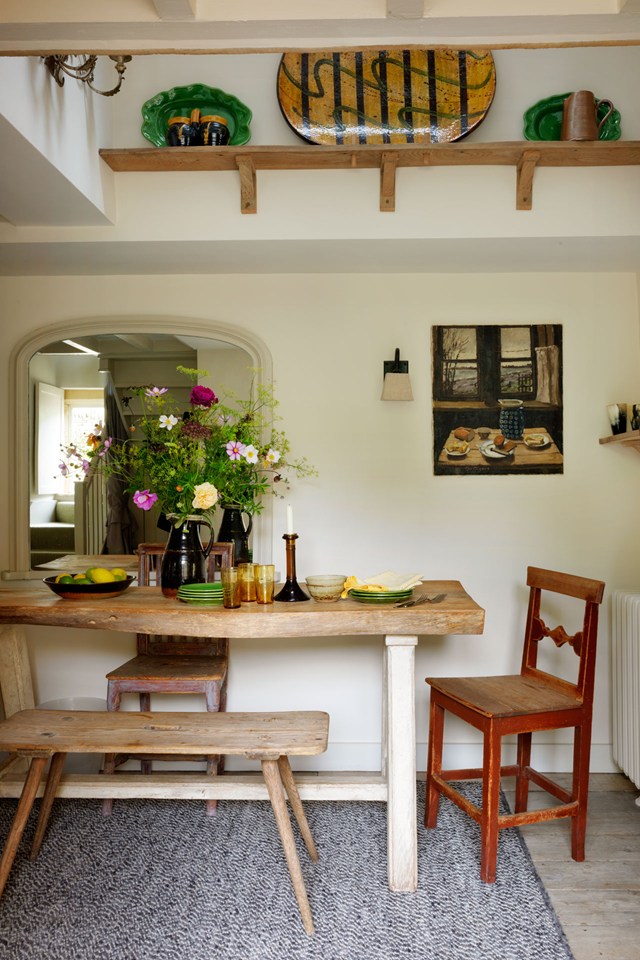
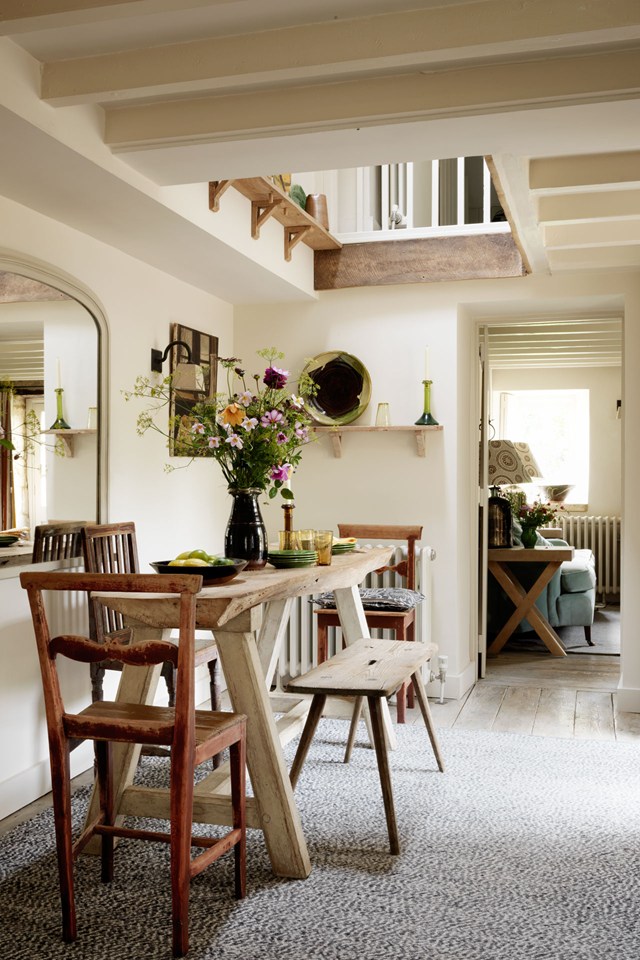
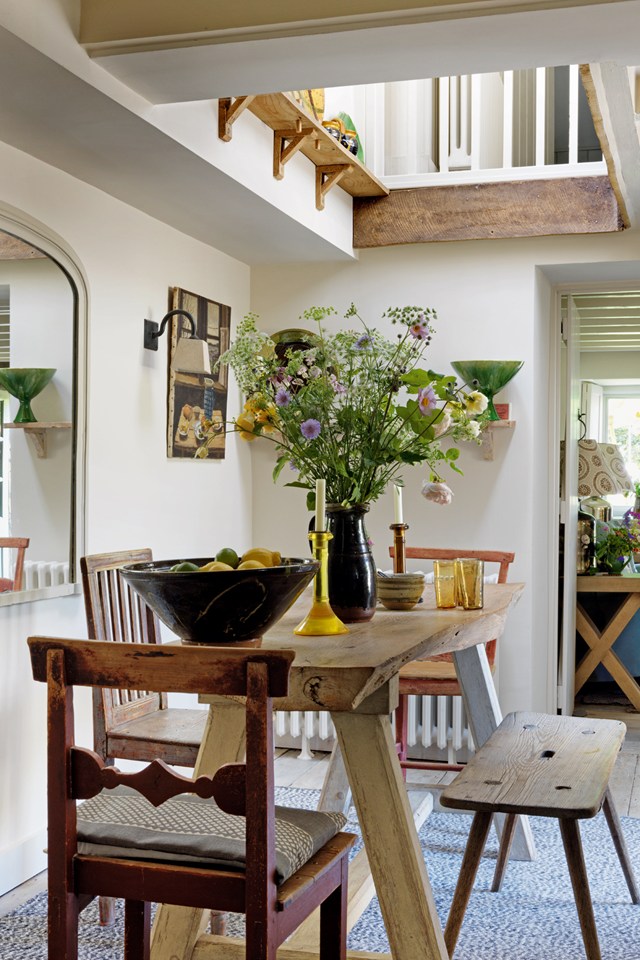
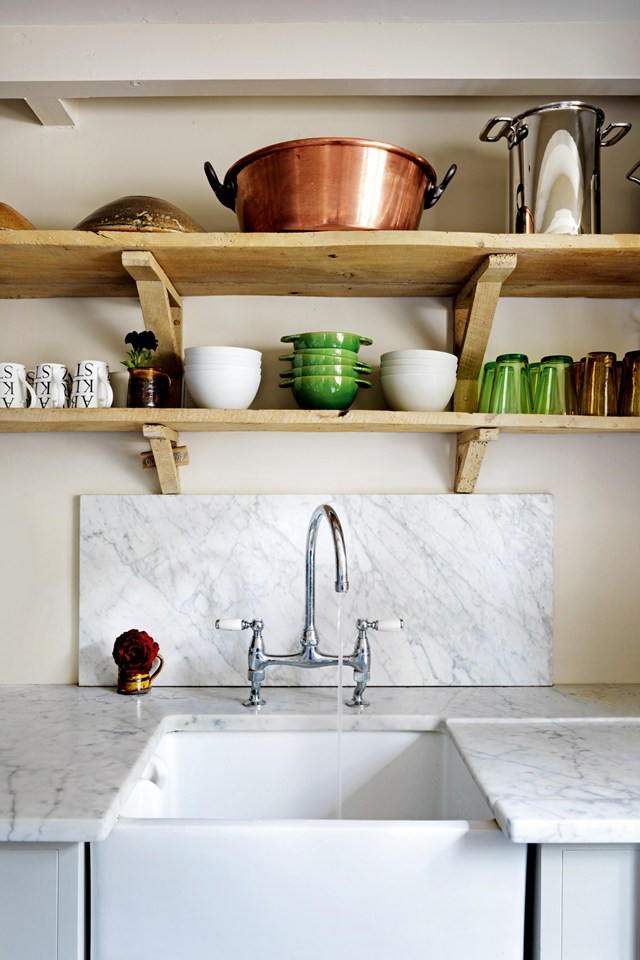
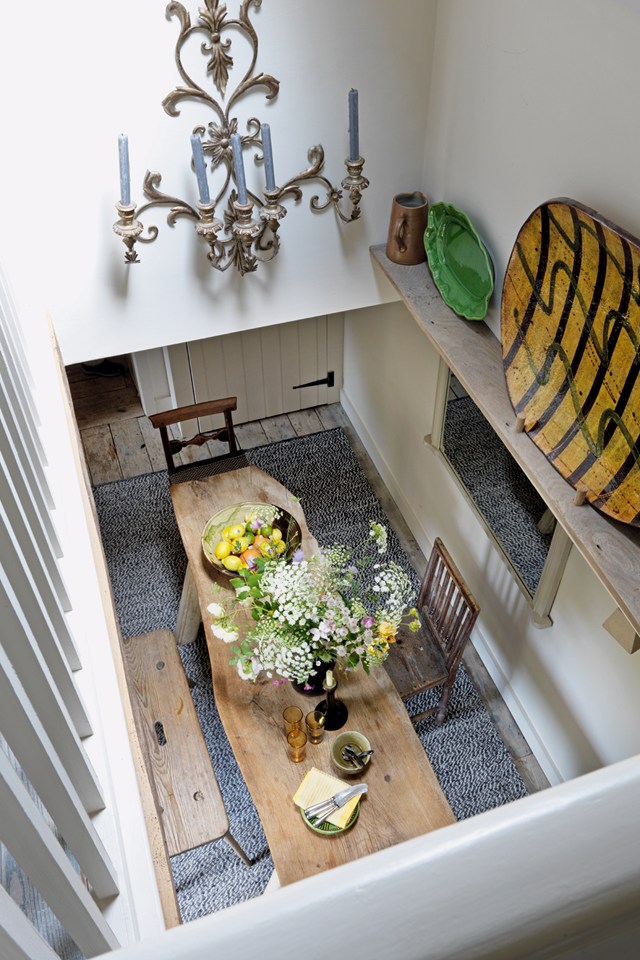

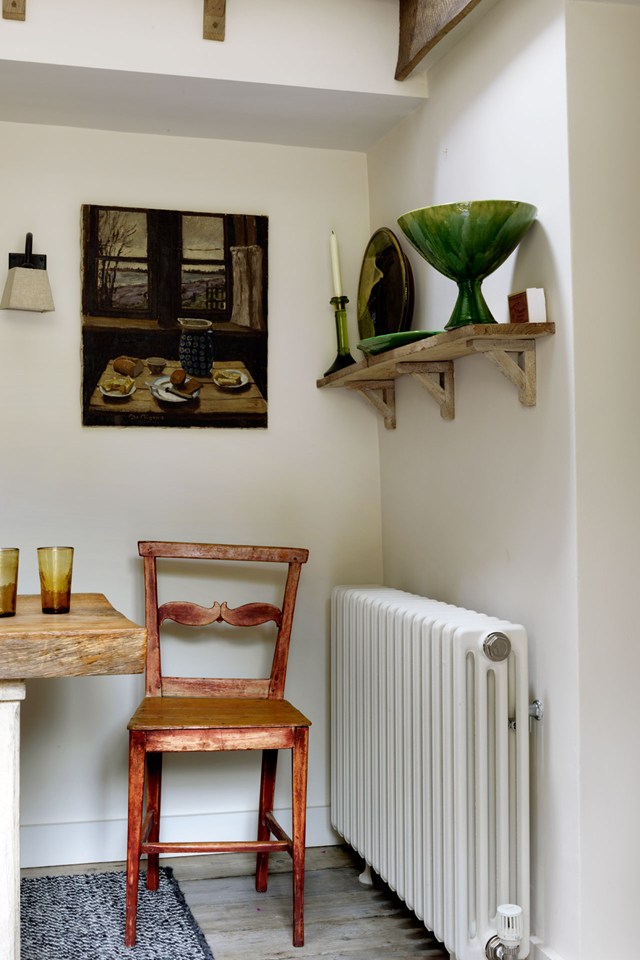
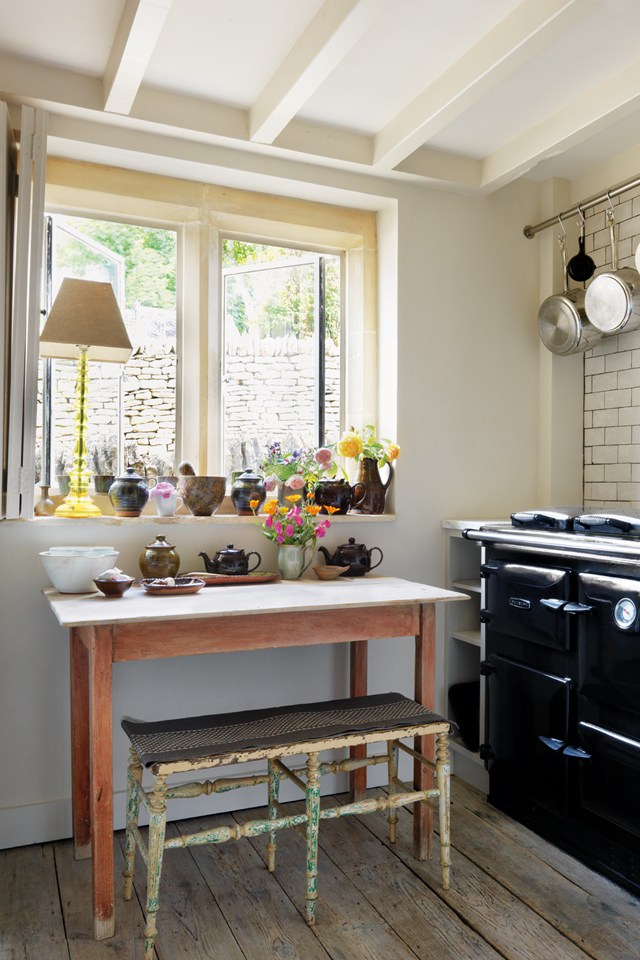
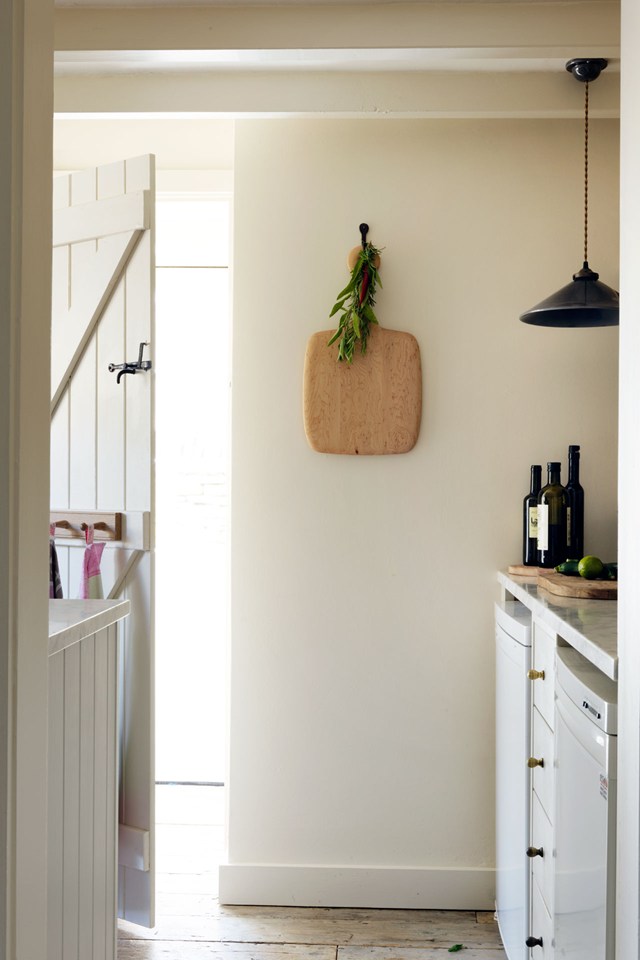
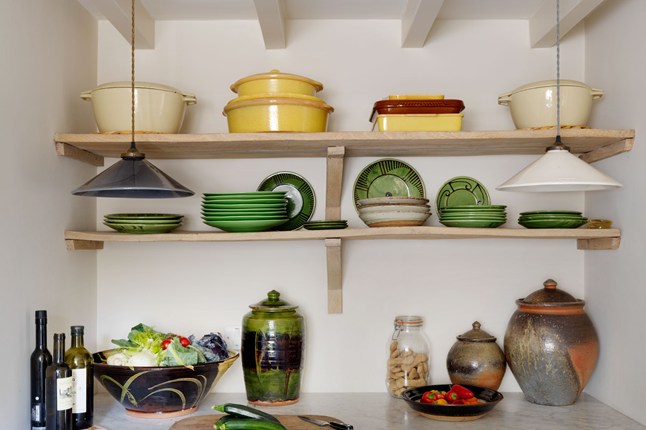
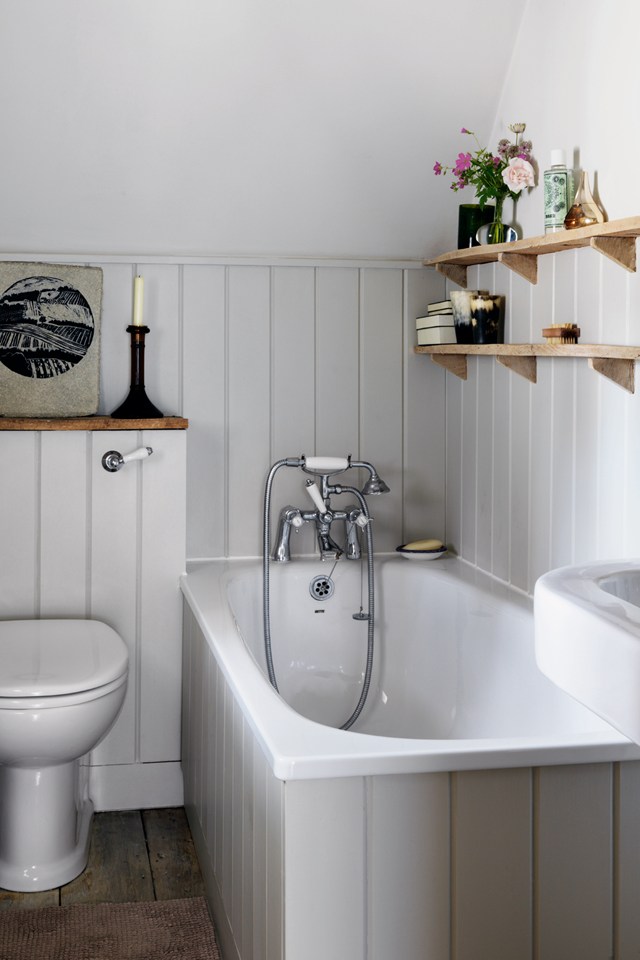
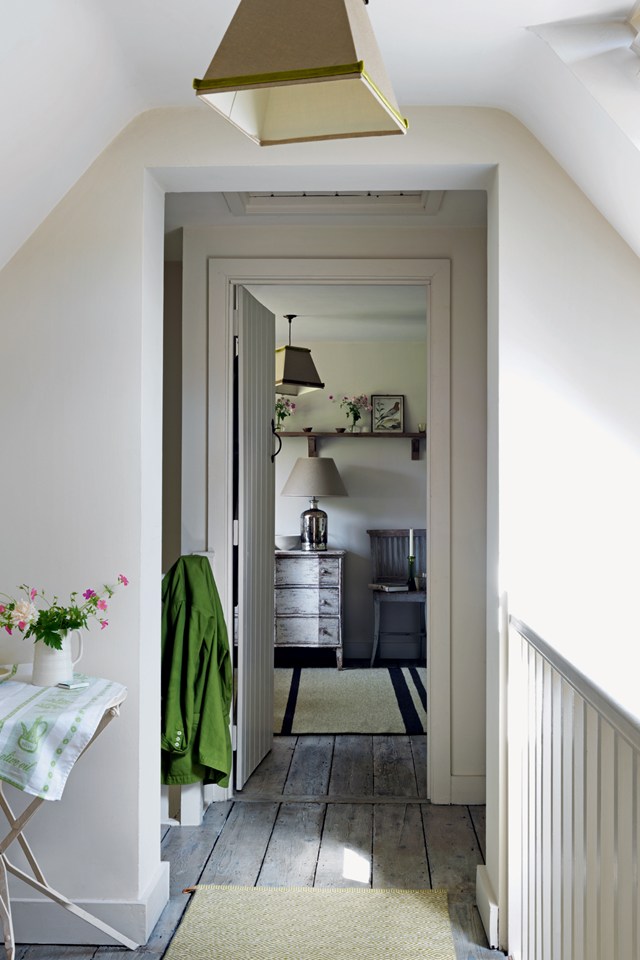
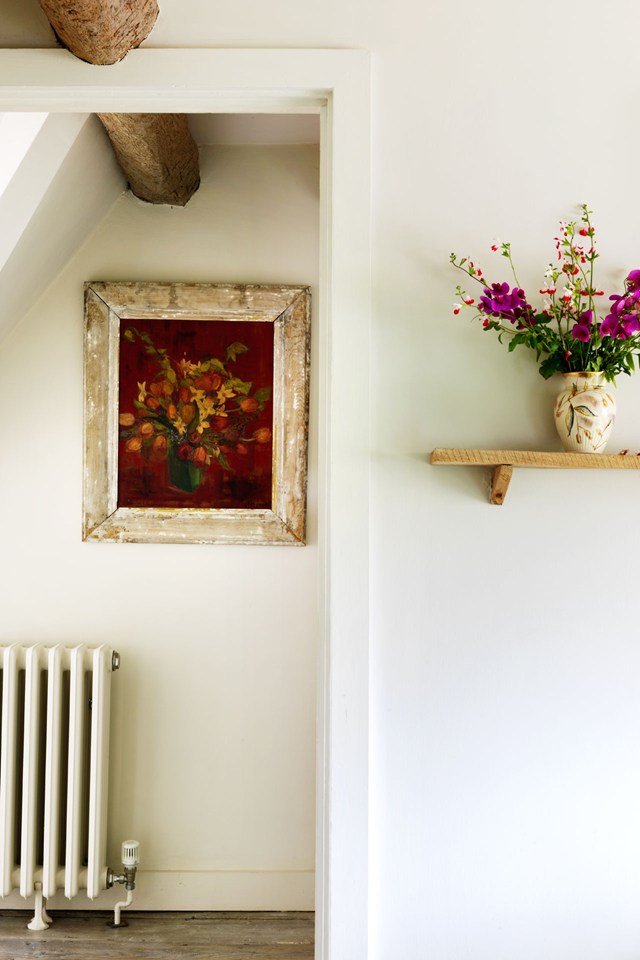
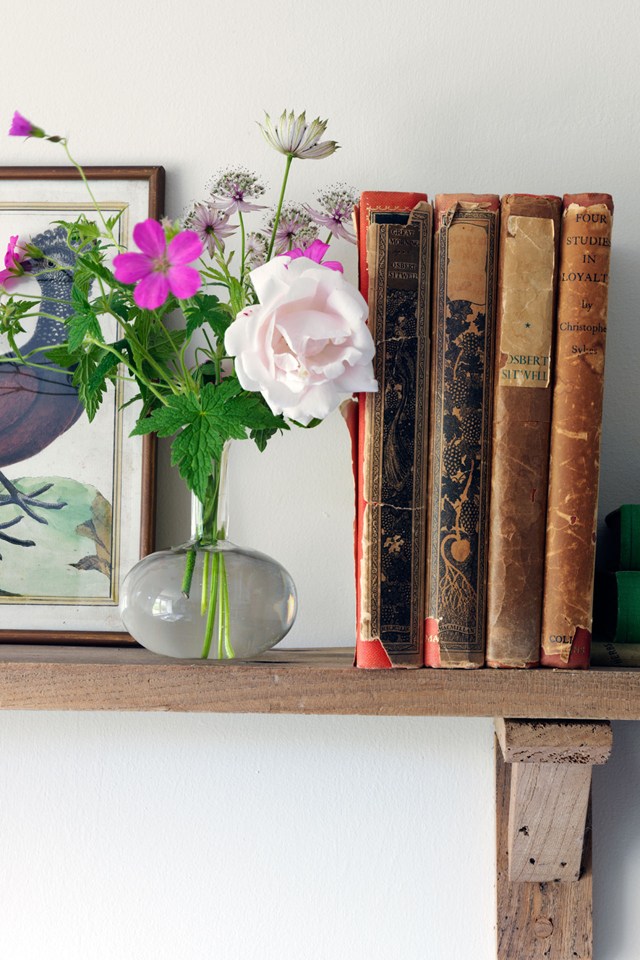
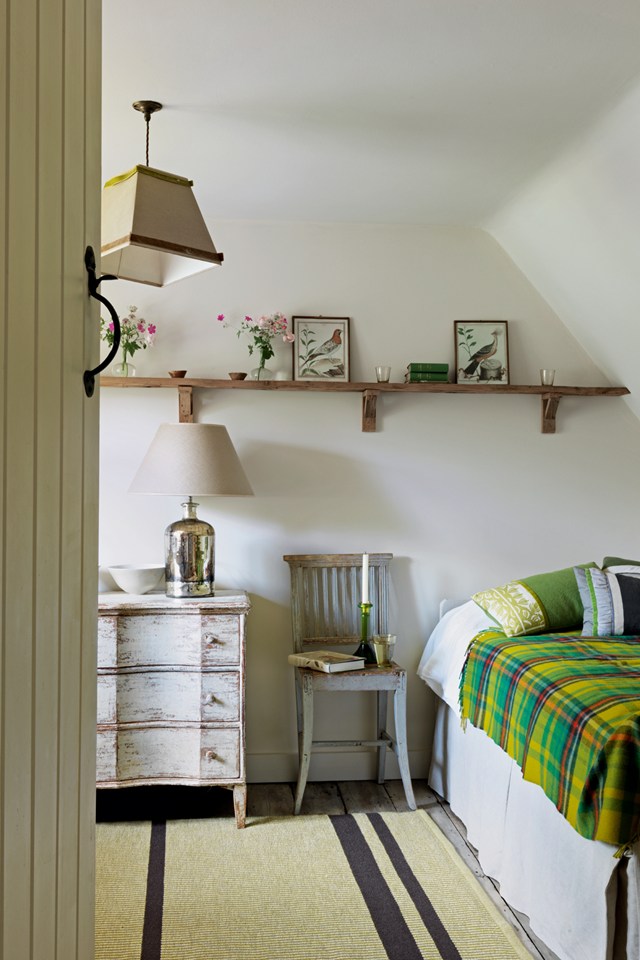

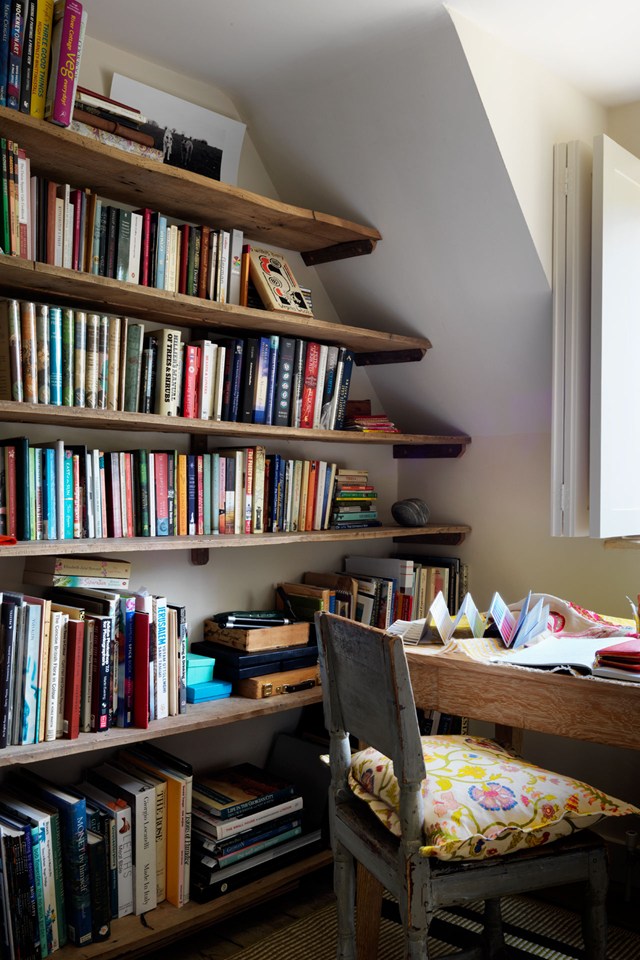
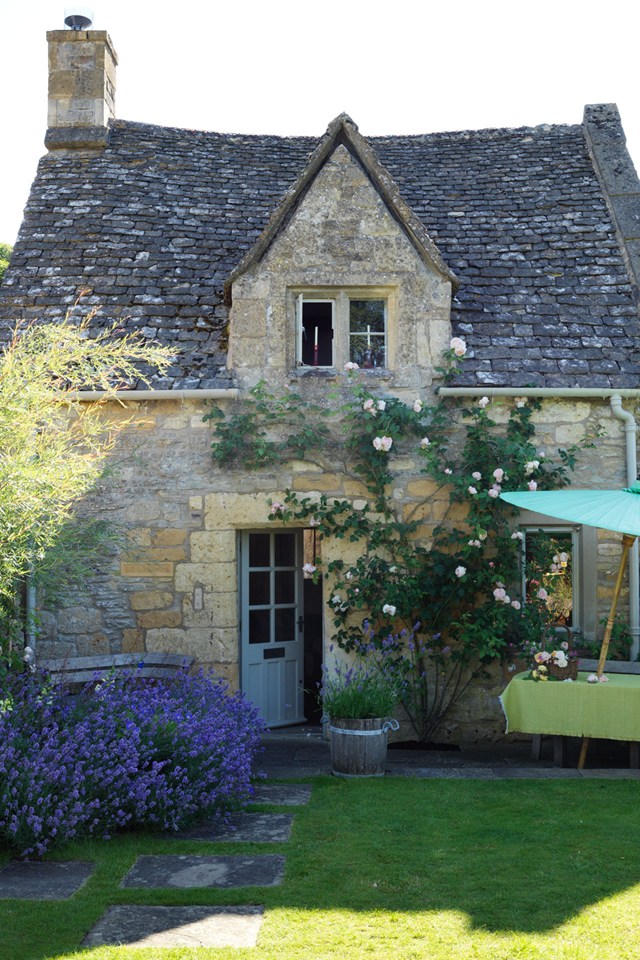
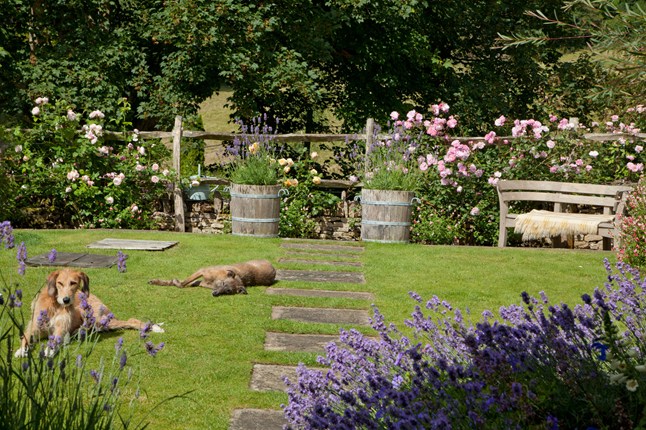









Discussion about this post